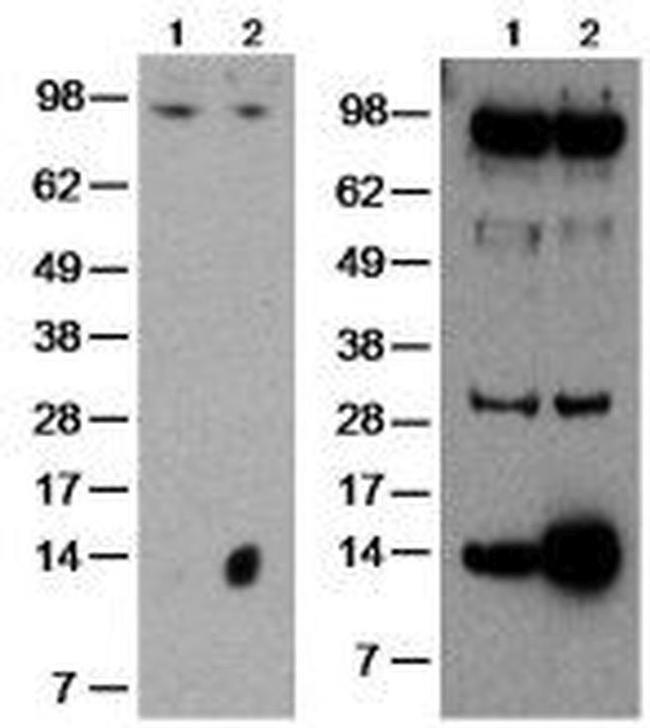Search Thermo Fisher Scientific
Invitrogen
GILZ Monoclonal Antibody (CFMKG15), eBioscience™
FIGURE: 1 / 9
GILZ Antibody (14-4033-82) in WB

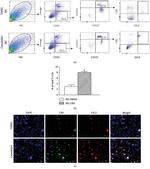

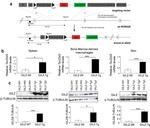
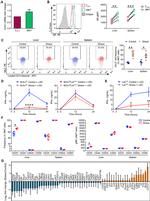
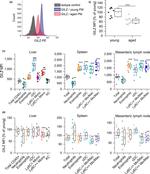


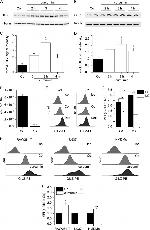
Product Details
14-4033-82
Species Reactivity
Published species
Host/Isotype
Class
Type
Clone
Conjugate
Form
Concentration
Purification
Storage buffer
Contains
Storage conditions
Shipping conditions
RRID
Product Specific Information
Description: GILZ is a leucine-zipper-containing protein that is induced by glucocorticoids. It is expressed in mast cells, monocytes, macrophages, dendritic cells, and T cells. GILZ has been shown to inhibit production of IL-2 as well as TCR-driven upregulation of FasL. GILZ mediates these changes in transcription, at least in part, by inhibiting DNA-binding of the transcription factors AP-1 and NF-kappaB. GILZ has also been shown to mediate anti-inflammatory signals in macrophages and dendritic cells by interfering with NF-kappaB-mediated signaling. Although GILZ has been reported to localize to the nucleus, more recent reports as well as testing at eBioscience have observed predominantly cytoplasmic staining.
Applications Reported: This CFMKG15 antibody has been reported for use in intracellular staining followed by flow cytometric analysis, immunoblotting (WB), and immunocytochemistry. (Fluorochrome conjugated CFMKG15 is recommended for use in intracellular flow cytometry.).
Applications Tested: This CFMKG15 antibody has been tested by western blot analysis of dexamethasone-treated mouse thymocytes. CFMKG15 recognizes endogenous mouse GILZ with an approximate molecular weight of 14 kDa; a non-specific band of approximately 95 kDa is also observed. CFMKG15 also recognizes endogenous human GILZ in dexamethasone-treated peripheral blood mononuclear cells, with an approximate molecular weight of 14 kDa; non-specific bands may also appear at approximately 33 kDa and 95 kDa. This can be used at less than or equal to 2 µg/mL. It is recommended that the antibody be carefully titrated for optimal performance in the assay of interest.
Purity: Greater than 90%, as determined by SDS-PAGE.
Aggregation: Less than 10%, as determined by HPLC.
Filtration: 0.2 µm post-manufacturing filtered.
Target Information
The TSC22 domain family member 3 protein (TSC22D3) is a leucine zipper protein that functions as a transcriptional regulator. The expression of TSC22D3 is stimulated by glucocorticoids and IL-10 and is thought to play a key role in the anti-inflammatory and immunosuppressive effects of these molecules. TSC22D3 can physically interact with and inhibit the activities of key inflammatory signaling mediators such NF-Kappa-B and AP-1. TSC22D3 functions as a transcriptional co-activator for various nuclear receptors and NF-Kappa-B. It has also been shown to be involved in the differentiation of mesenchymal stem cells towards osteoblasts and bone formation.
For Research Use Only. Not for use in diagnostic procedures. Not for resale without express authorization.
Bioinformatics
Protein Aliases: delta sleep inducing peptide, immunoreactor; Delta sleep-inducing peptide immunoreactor; DSIP-immunoreactive leucine zipper protein; DSIP-immunoreactive peptide; GILZ; Glucocorticoid-induced leucine zipper protein; long glucocorticoid-induced leucine zipper protein; Protein DIP; Tilz3; TSC-22 related protein; TSC-22-like protein; TSC-22-related protein; TSC-22R; TSC22 domain family protein 3; TSC22 domain family, member 3; TSC22-related inducible leucine zipper 3; TSC22-related-inducible leucine zipper 3
Gene Aliases: DIP; Dsip1; DSIPI; GILZ; Tilz3; TSC-22R; TSC22D3
UniProt ID: (Human) Q99576, (Mouse) Q9Z2S7
Entrez Gene ID: (Human) 1831, (Mouse) 14605

Performance Guarantee
If an Invitrogen™ antibody doesn't perform as described on our website or datasheet,we'll replace the product at no cost to you, or provide you with a credit for a future purchase.*
Learn more
We're here to help
Get expert recommendations for common problems or connect directly with an on staff expert for technical assistance related to applications, equipment and general product use.
Contact tech support
